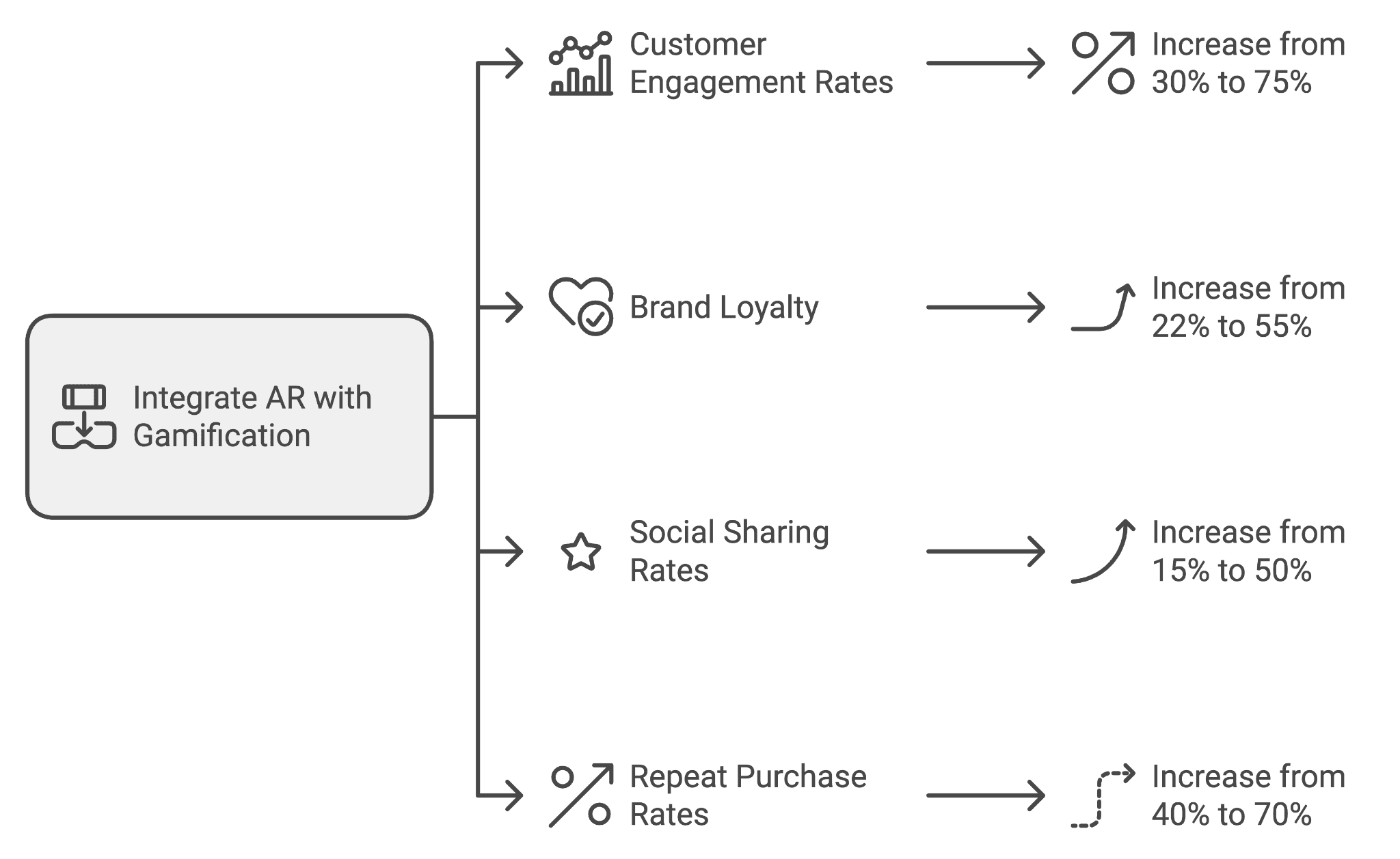AR and Gamification: The Perfect Combo for Brand Loyalty
In this real-time world, brands are constantly seeking innovative ways to engage consumers and foster loyalty. One of the most promising strategies is the integration of Augmented Reality (AR) with engagement `. This powerful combination not only enhances customer experiences but also drives deeper brand engagement and loyalty.
Understanding AR and Gamification
Augmented Reality overlays digital information onto the real world, allowing users to interact with virtual elements in a physical environment. Gamification, on the other hand, applies game-design elements in non-game contexts to motivate and engage users. When combined, AR and gamification create immersive experiences that captivate consumers, encouraging them to interact with brands in meaningful ways.
The Impact of AR Gamification on Brand Loyalty
Enhanced Customer Engagement immersively
AR gamification significantly boosts customer engagement by making interactions more interactive and enjoyable. For instance, brands can create AR-based games that challenge users to complete specific tasks or quests related to their products. This not only entertains customers but also educates them about the brand and its offerings.
Statistical Insights on AR Gamification
The effectiveness of AR gamification can be quantified through various metrics. According to recent studies

These statistics illustrate how integrating gamification with AR can lead to substantial improvements in customer engagement, loyalty, and overall brand interaction.
Creating Memorable Experiences
Interactive Product Demos
One effective application of AR gamification is through interactive product demonstrations. By allowing customers to explore product features engagingly, brands can bridge the gap between online and offline shopping experiences.
Example: A furniture retailer might use AR to let customers visualize how a piece of couch would look in their home through a mobile app. Customers could earn rewards for sharing their setups on social media or completing quizzes about the product’s features.
Gamified Loyalty Programs
AR-enhanced loyalty programs transform traditional point-earning systems into dynamic experiences. Customers can earn points by completing various AR challenges, such as scanning products in-store or participating in brand-related quizzes.
Example: Starbucks has successfully integrated AR into its loyalty program by allowing customers to unlock unique experiences through QR codes on their cups.
Building Emotional Connections
Personalization Through Data Insights
Combining AR with gamification allows brands to leverage data insights for personalized experiences. By analyzing customer behavior, brands can tailor challenges and rewards that resonate with individual preferences, fostering a deeper emotional connection.
Bridging Online and Offline Interactions
AR gamification also helps bridge the divide between online and offline marketing efforts. When consumers scan AR-enabled print materials or packaging, they can access digital experiences that enrich their interaction with the brand.
Overcoming Challenges in Implementation
While the benefits of integrating AR with gamification are clear, brands may face challenges in implementation:
Development Costs: Creating high-quality AR content requires significant investment.
Technical Limitations: Ensuring compatibility across various devices can be complex.
User Adoption: Some consumers may be hesitant to engage with new technologies.
Future Prospects for AR Gamification in Marketing
As technology continues to evolve, the potential for AR gamification will expand further:
AI Integration: Combining AI with AR can enhance personalization by predicting user preferences and optimizing experiences based on behavior.
Community Building: Brands may leverage gamified features to create communities around shared interests, fostering deeper connections among customers.
Sustainability Initiatives: Brands can use gamified AR experiences to educate consumers about sustainability efforts, encouraging responsible purchasing behavior.
Conclusion
The integration of Augmented Reality and gamification presents a transformative opportunity for brands looking to enhance customer engagement and promotes loyalty. By creating immersive experiences that entertain and educate consumers, brands can build stronger emotional connections that drive repeat purchases and advocacy. As this trend continues to grow, brands that embrace these innovative strategies will be well-positioned to thrive in an increasingly competitive marketplace.
Comments
Your comment has been submitted successfully!